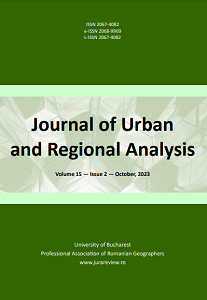TOWARDS A REGIONAL CROSSOVER MODEL? THE ROLES PLAYED BY SPATIAL VICINITY AND CULTURAL PROXIMITY AMONG ETHNIC MINORITIES IN AN EAST-CENTRAL EUROPEAN BORDERLAND
TOWARDS A REGIONAL CROSSOVER MODEL? THE ROLES PLAYED BY SPATIAL VICINITY AND CULTURAL PROXIMITY AMONG ETHNIC MINORITIES IN AN EAST-CENTRAL EUROPEAN BORDERLAND
Author(s): Iancu-Constantin Berceanu, Nicolae Popa, Remus CrețanSubject(s): Sociology of Culture, Ethnic Minorities Studies, Politics and Identity, Identity of Collectives
Published by: Editura Universitară
Keywords: ethnic minorities; regional identity; crossover ethnic model; cross-border area; Timiș county; Romania;
Summary/Abstract: The issue of intercultural negotiation among ethnic minorities in border areas has been widely debated in the social sciences, but the roles played by spatial vicinity and cultural proximity in influencing ethnic membership in borderland areas is still under-researched. This article addresses the role of geographic vicinity among ethnic minorities residing in a border area and the way cultural proximity is involved in this process. The research uses a questionnaire and interviews with a sample of members of ethnic groups (Hungarians, Bulgarians, Serbs and Ukrainians) who live in western Romania (Timiș county). The findings highlight that geographic proximity constitutes a key factor in the manifestation of cultural proximity in the relationship between ethnic minorities and their counterparts in the cross-border region. This process is also shaped by the bilateral relations between the host country and the country of origin of the ethnic group. Concluding the analysis, a crossover ethnic model is proposed.
Journal: Journal of Urban and Regional Analysis
- Issue Year: 15/2023
- Issue No: 2
- Page Range: 159-190
- Page Count: 32
- Language: English

